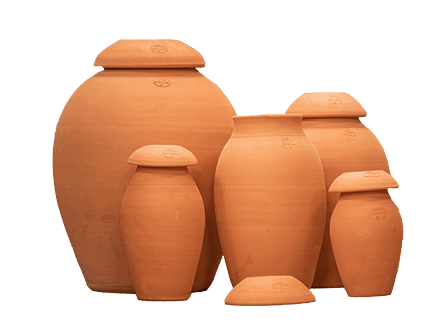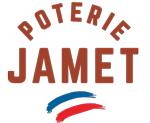Ollas / Oyas: how does it work?
The best method of irrigation


Principle of operation
Irrigation by ceramic pottery, called Olla(s) or Oya(s) is an underground irrigation technique, very economical in water and particularly suitable for all gardens and plantations.
A clay pot is buried and filled with water up to the neck to irrigate the plants placed around it. The porous walls allow water to escape which will be absorbed by the roots of the plants.
Then, the Ollas takes care of diffusing this water in a perimeter and a variable duration according to the nature of the soil, the plants in the surroundings, the climate and of course its volume.
Origin and scientific studies
The Oyas or Ollas technique, several thousand years old (*) and yet little known, has been the subject of numerous scientific research since the 1960s, in particular with the Alternative Nobel Prize winner Bill Mollison.
This eminent Australian biologist and environmentalist, renowned for his work in Environmental Physiology and Permaculture, has called this system "the best irrigation system in the world" in his The Global Gardener videos.
(*) The origin is controversial, but dates back several thousand years in Africa, in the Mediterranean Basin at the time of the Roman Empire, Middle East and also in Asia...
Oyas or Ollas, what's the difference?
There are two very similar terms to describe irrigation by buried jar: Ollas and Oyas*.
This is a Spanish terminology meaning "Pot" in French.
Ollas is pronounced "Oyas". These two names are therefore synonymous with very similar objects in principle.
Nevertheless, if the two words designate the same concept, in the realization many differences exist!
The way your jar is designed will make all the difference between an optimal product for irrigation and another.
*Oyas is a registered trademark of the company Oyas environnement
Technicality of the design of an olla
The technique of irrigation jars is quite simple, but it is important to understand how it works and the main characteristics to ensure effective irrigation.
Find the right permeability
The main risks are that the olla (oya) is not permeable enough to provide the plant with all the water it needs or conversely, if it is too permeable, due to its composition / microcracks…, it saturates the ground with water permanently and in the same place.
It is even more harmful in the medium term than the lack of water because it completely impoverishes the soil.
A continual runoff of water, too much in the same area, compacts the soil putting the bacteria in a latent state. This no longer allows normal bacterial life, which is ONE of the essential conditions for generating active microbial and biological life in soils favorable to the proper development of plants.
In addition, an olla (oya) that is too permeable has a reduced autonomy and a limited range of action.
A soil with too much water will be compact and poor in bacteria, with little or no biological life, therefore not favorable to the development of plants.
Know evotranspiration
Conversely, if irrigation is well controlled with what is necessary but without excess, this will give fresh, airy soils, unsaturated and packed with humidity, conducive to active bacterial life and therefore to good plant development.
This is why the olla (oya) must respect this balance as closely as possible to supply the right quantity of water necessary for the different types of soil, but without excess, then be able to satisfy plants that require little or very much water. water.
For this, it is important to know in advance the evapotranspiration, i.e. the need for irrigation depending on the soil, the state of the plants and the size of the jar:
- Type of soil (sandy/clayey), its culture/type of plant (aromatic, tree, vegetable, ornamental, etc.).
- Stage of plant development (growth, flowering, fruiting).
- Choice of the jar so that it can meet the water needs of the plants.
Find the right level of porosity of the Ollas (or Oyas)
Other factors will affect the irrigation including the porosity of the jar which will depend on the following elements
Eco-responsibility of Oyas Jamet
The irrigation ollas is an alternative, 100% natural solution that increases the efficiency of water use while reducing the operating costs of companies or individuals for a lower investment and maintenance than most other irrigation solutions.
The investment of Ollas-JAMET is amortized from the first year of use.
We thus contribute to preserving water resources in a reasoned economic model.
Producers, landscapers, green space managers, local authorities, private companies, individuals… can count on Ollas-JAMET® to reconcile the following interests:
- Have an economical and qualitative solution, easy to implement.
- Join an ecological and responsible approach.
- Act for the environment.
- Develop your civic image.
- Reduce the irrigation budget and its constraints.
- Increase the efficiency, ease and control of watering.
